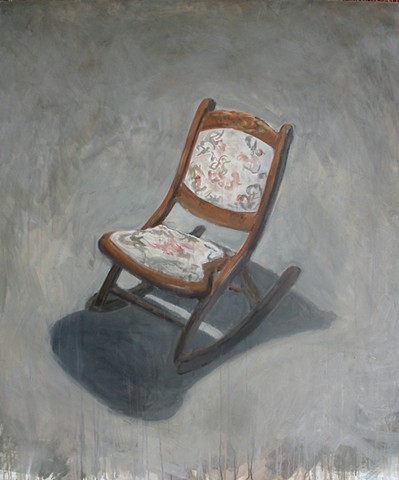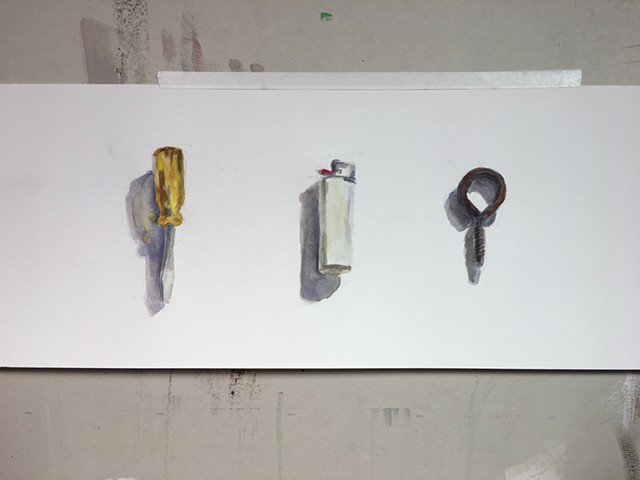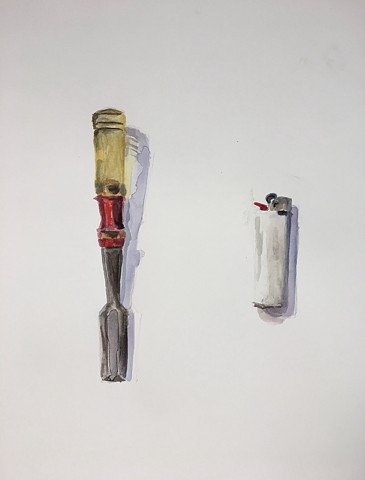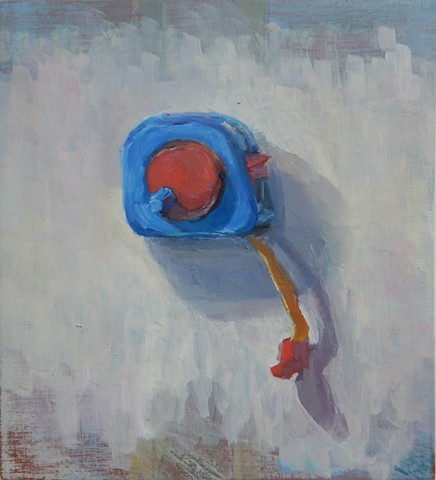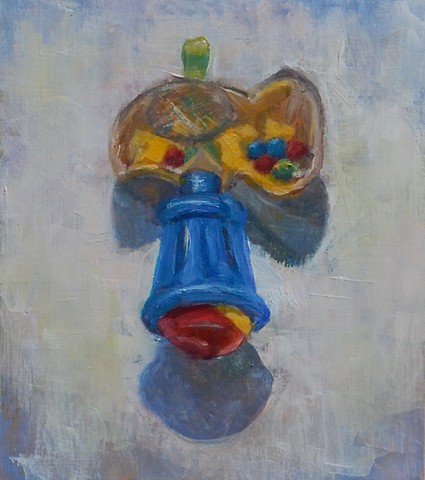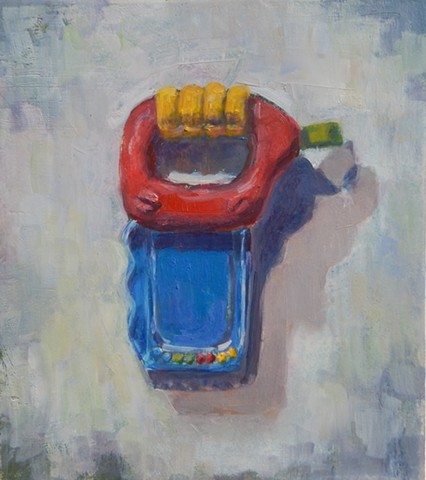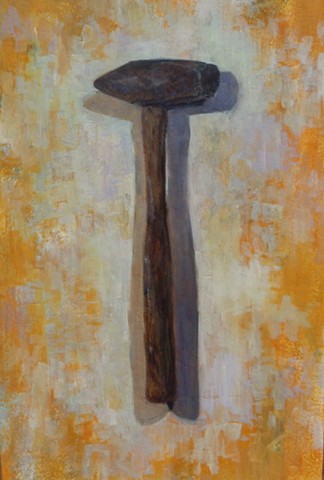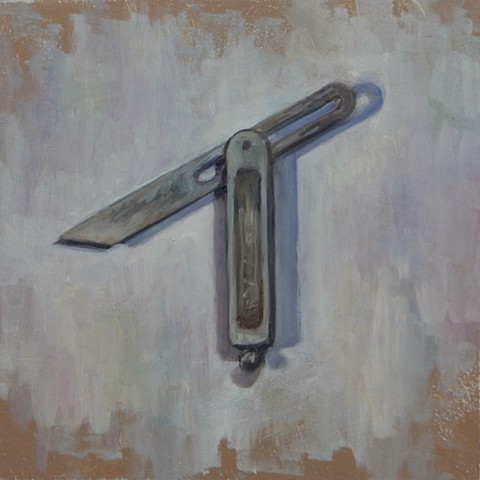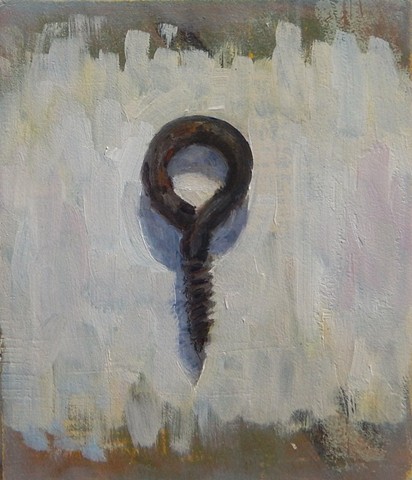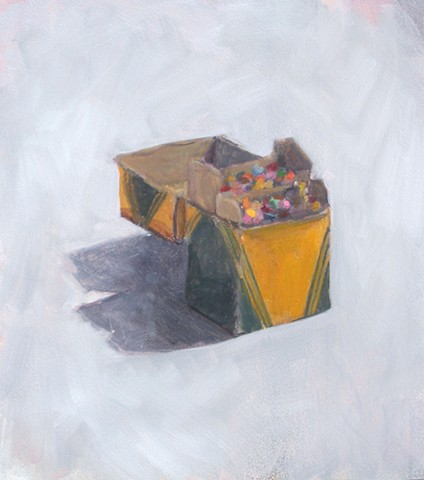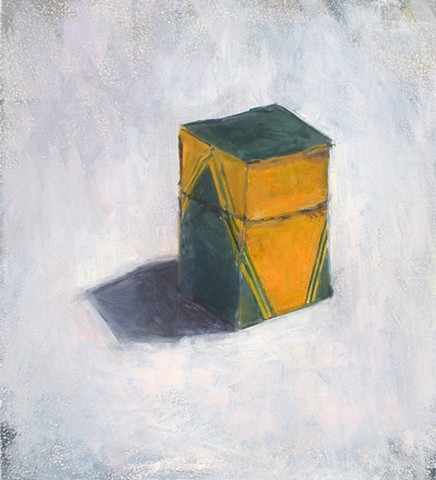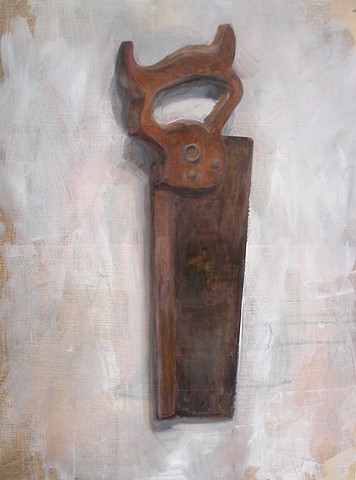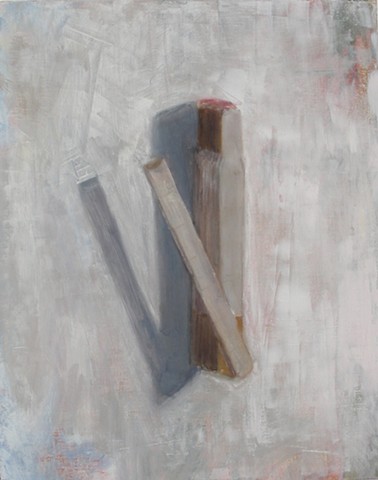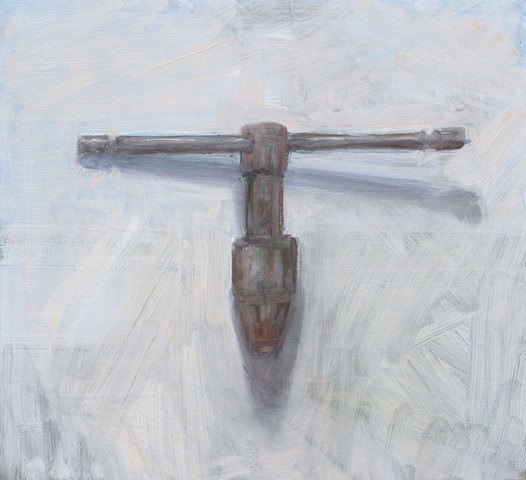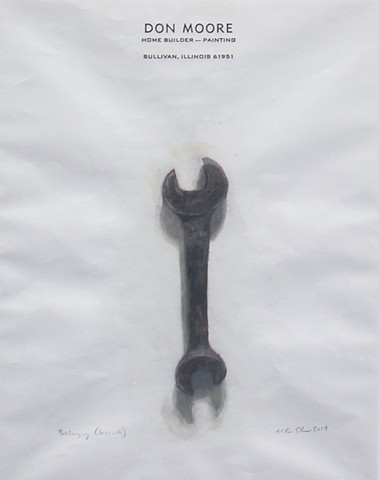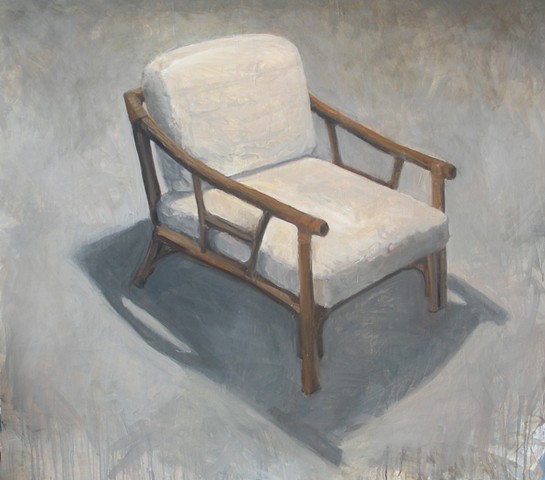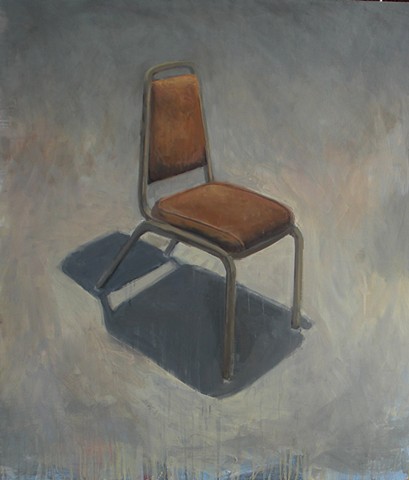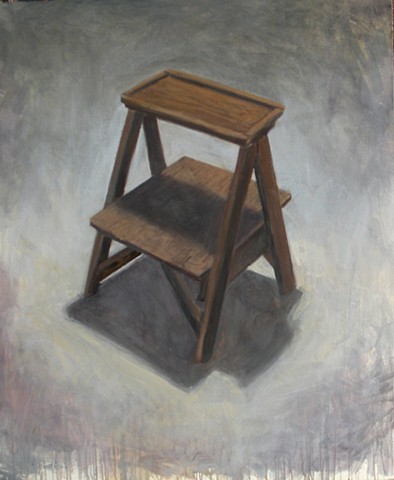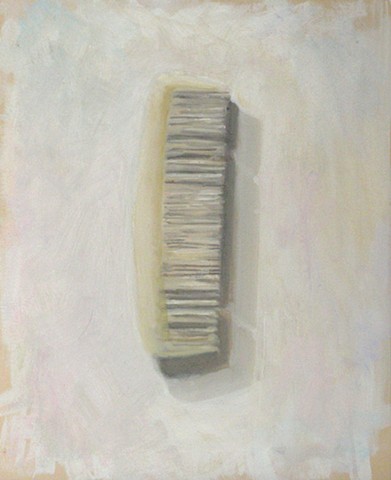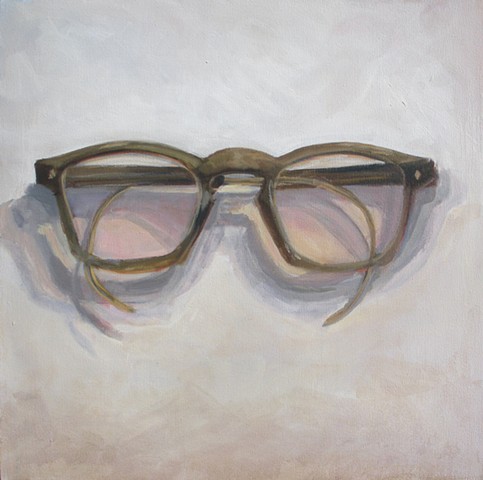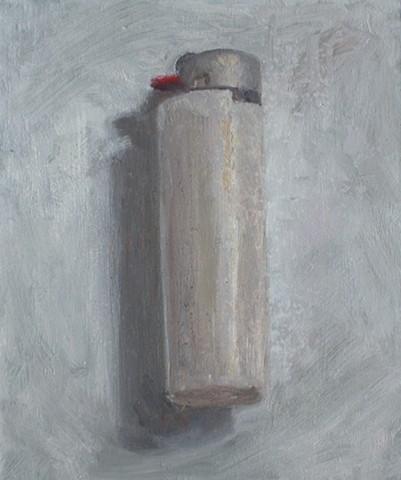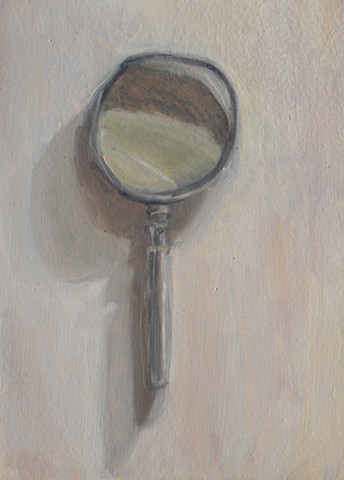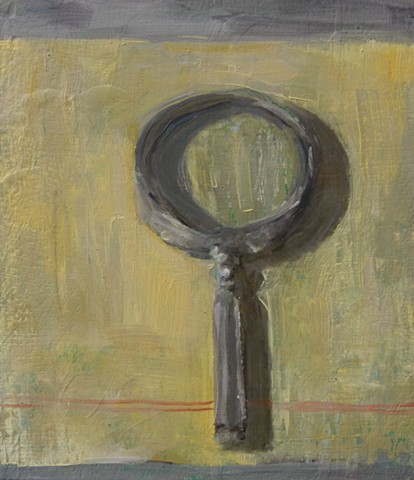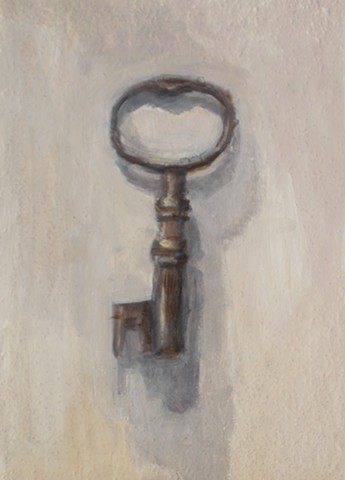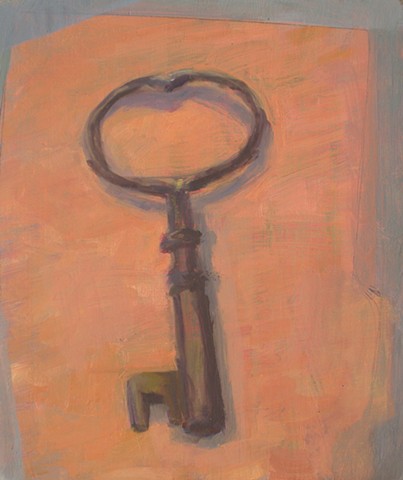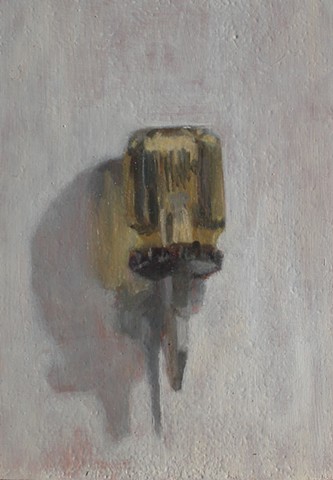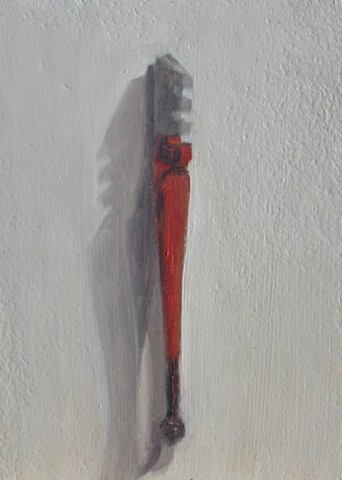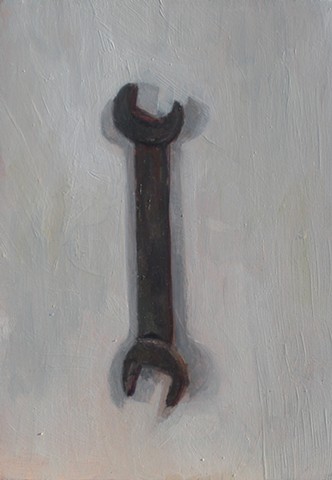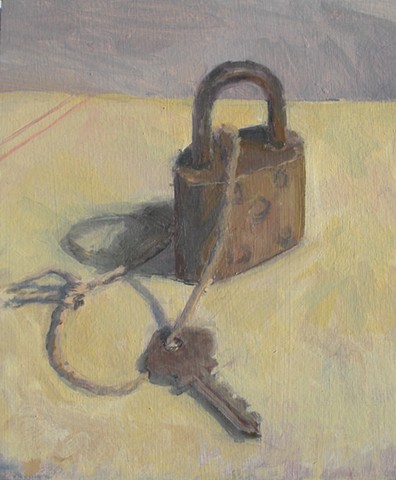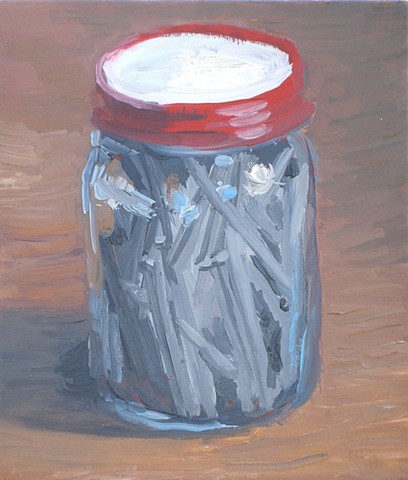Belongings
The Belonging series is a series of works revolving around objects that I've inherited. They began with a burst of paintings of a jar of nails that was in my great-grandfather's wood shop and went from there. Sentimentality, familiarity, surface, and application all play a role in this series.
All works are oil on panel.
STILL--written by Angela Reinoehl, art historian and Senior Lecturer at Southern Illinois University
A magnifying glass, an office chair, a glass jar holding a few nails . . . these mass-produced, functional objects populate our lives. We use them, but rarely notice them. The artist Jasper Johns described similarly common and mundane images he took as the subject of his work more than 50 years ago as, “Things the mind already knows.” But, does the mind really already know? This assembly of things was inherited from a great-grandfather never met. When examined as a group, basement and garage workshops come to mind. Today, we call them “man caves,” but these are from an era when this concept would have seemed absurd. These are tools that littered work benches used by fathers and grandfathers on Saturday afternoons and coveted by the children who sat on stepstools looking on.
Cohan does not choose to render these as a group or in situ. They are singular, large, and painterly images floating on canvases. The veil of drips the artist allows to trickle down the surface seems to represent the way the memory obscures past experiences. The objects cast shadows, which give an illusion of an almost human physical presence. The viewer can no longer ignore them. A magnifying glass takes on symbolic significance – it speaks of inquiry, of close examination. An old school compass represents plans. Two chairs – one of the mass-produced, generic variety and the other a granny rocker –invoke unexpected and expected feelings of nostalgia. The brushstrokes soften the edges of the objects to which they refer. The fact that these are not the actual objects, but images of objects becomes clear. This is a message we received from Johns all those years ago. But, while Johns’ paintings of images were decidedly impersonal, Cohan’s paintings nostalgically reference people and times lost - those still memories that inhabit our minds.
